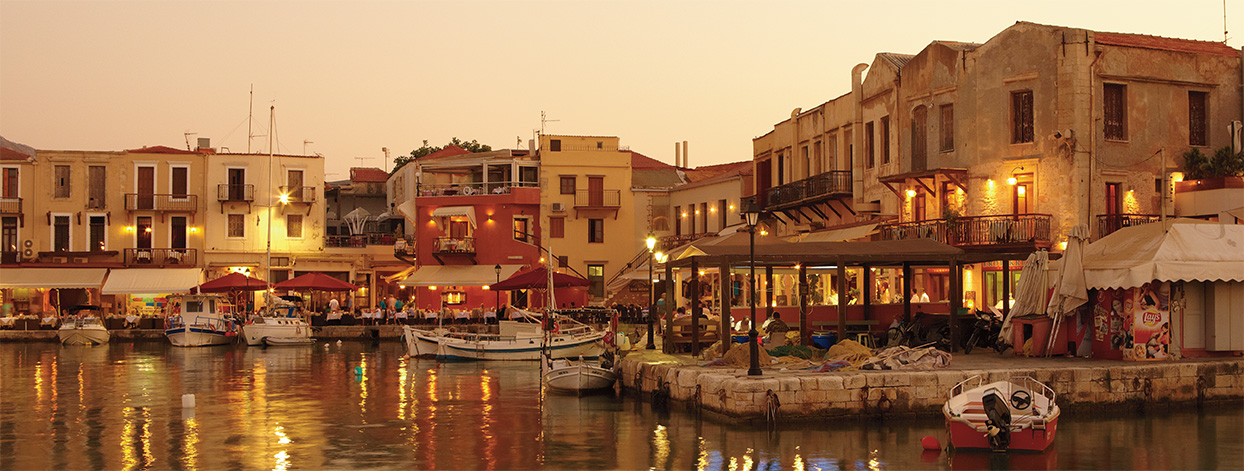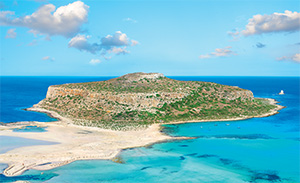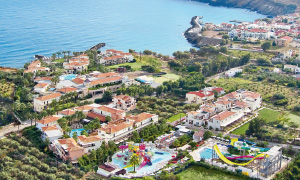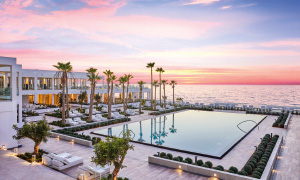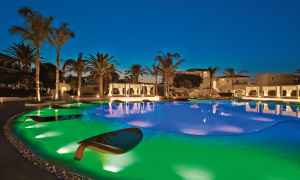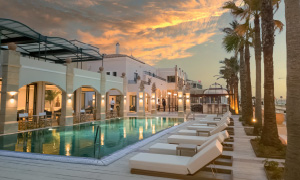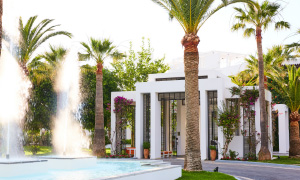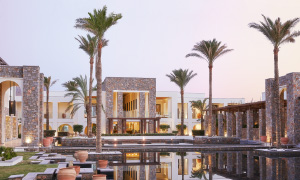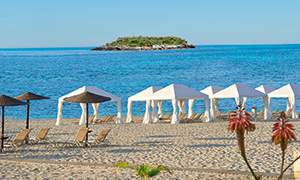WHAT'S HOT IN CRETE
Rethymno Places of interest
The romantic Old Town
Capture Rethymno’s lost moments in time by following one of the many scenic routes around the picturesque city centre. Start from Arkadíou Street, where you can follow a unique cultural route crossing Rethymno's historical centre from east to west.
Fortezza - Venetian fortress
The Venetian Fortress- Rethymno's landmark, the renowned “Fortezza” that stands imposingly on the hill of Paleókastro overlooking the Cretan sea, as well as the impressive cityscape. Here you can admire beautifully preserved buildings, such as the armoury with its four arched openings, Erofyli theatre, the ruins of the Episcope Palace, the Mosque of Sultan Ibrahim, and the Holy Temple of St. Theodore of Trihinas. Continue to explore Rethymno until you reach the old Venetian Harbour that you will love.
Preveli Monastery
You will be delighted with the magnificent view of the Libyc sea. You can admire the wood carved chancel with religious icons that are real masterpieces and represent scenes from the Bible in a detailed way. Some of these icons date back to 1750. The catholicon of the monastery is a two-aisled popular art church, built in 1836. It hosts the old abbey, which is used today as a guest house. You will also find a small museum exhibiting religious icons that date back to the 19th century. There are also interesting documents dating back to 1798 as well as the ledgers of the monastery dating back to the 19th century.
Sfendoni Cave
Sfendoni Cave is located near the village of Zoniana at a distance of just 52 kilometers from the town of Rethymno. It is one of the most important caves in Greece, covering an area of about 3.000 square meters. The cave’s unique and rare beauty mesmerizes everybody, establishing it as one of Crete’s most beautiful caves. Visitors are allowed to explore a route of about 270m, along which they can admire a variety of impressive formations. Large columns create labyrinthine compartments inside the cave and stalactites and stalagmites of different colours and shapes decorate the cave’s chambers.
Arkadi Monastery
It is located 20 km of Rethymno in a lush green landscape full of oak trees, kermes oak trees, pine trees and vineyards. Built in 1587, its architecture is influenced in various ways by the early renaissance, the gothic and classic style as well as the early baroque style. At first, it acquired reputation as a center for copying Greek manuscripts, a work the monks of the monastery had been in charge of. At the same time, it was also renowned for the elaborately embroidered canonicals it produced. The monastery hosts a museum with an exhibition of findings from the "Arkadi holocaust", heirlooms, weapons, icons, an ossuary, etc.
Heraklion Places of interest
The Old Port
Is on the left side of the modern port. During the Venetian period, it was an important commercial and military centre.
The Koules Fortress
A ‘must see’ in Heraklion town. It was built to protect the Venetian port from raids. Remains of the carved lions of Saint Mark can be seen. On the top, an outdoor theatre is used for summer festivals.
Gortys
Messara Valley, near Agioi Deka, 46 km south of Heraklio.
The Basilica of Agios Titos is one of the oldest and most important monuments of Christianity in Crete and was the seat of the first bishops of the Cretan Church. The most important monuments of ancient Gortys are the ruins of the acropolis and the odeum.
Agia Triada
4 kms west of Phaistos
Visit the ruins of the Royal Villa, the small Minoan Palace at Agia Triada. The Palace served as a summer residence for the King of Phaistos.
Ideon Cave
55 km from Heraklio at an altitude of 1100m on Mount Psiloritis.
The sacred cave on the Nidha plateau, Rhea hid her son Zeus to save him from his father Kronos. Archaelogical findings include bronze statuettes, bronze shields and offerings to Zeus, the father of all gods. Nearby are two springs, Zothimos and Kanithos, that keep their pre-Hellenic names.
Zakros
45km east of Sitia.
The palace was unearthed by the Greek archaeologist N. Platon in 1961. The total area of the palace, including ancillary buildings, is approx. 10,000 sq.m. Over 10,000 objects, many of them considered unique, are now on display in the Heraklio and Sitia museums.
Malia
3 km east of Malia. The Palace of Malia, which covered an area of 7,500 sq.m., is the third largest Minoan palace and is considered the most "provincial" from an architectural point of view. According to tradition the third son of Zeus and Europa, Sarpedon, ruled here.

